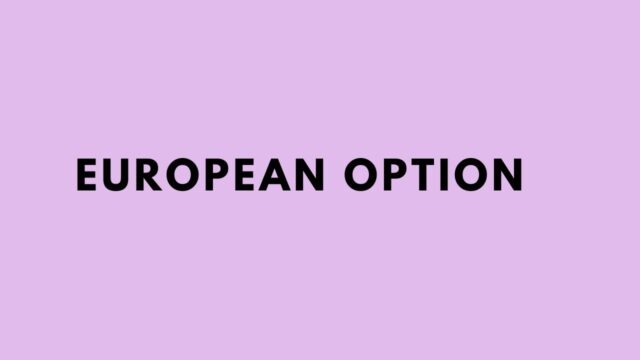
A European option is a type of financial derivative contract that gives the holder the right, but not the obligation, to buy or sell an underlying asset at a predetermined price (the strike price) on or before a certain date (the expiration date). European options are commonly used in the financial markets as a way to hedge risk or speculate on the price movements of underlying assets, such as stocks, commodities, currencies, and indexes.
Types of European Options:
There are two main types of European options: call options and put options.
Call options give the holder the right to buy the underlying asset at the strike price on or before the expiration date. For example, if you hold a call option on a stock with a strike price of $50 and the stock price is $60 at expiration, you can exercise your option to buy the stock at $50, even though its market price is higher. This allows you to profit from the difference between the strike price and the market price.
Put options give the holder the right to sell the underlying asset at the strike price on or before the expiration date. For example, if you hold a put option on a stock with a strike price of $50 and the stock price is $40 at expiration, you can exercise your option to sell the stock at $50, even though its market price is lower. This allows you to profit from the difference between the strike price and the market price.
Features of European Options:
Some key features of European options include:
- Expiration date: European options can only be exercised on the expiration date, whereas American options can be exercised at any time before the expiration date.
- Settlement: European options are settled in cash, meaning that the holder receives the difference between the strike price and the market price at the time of exercise. In contrast, physical settlement involves the delivery of the underlying asset to the holder.
- Premium: The premium is the price paid by the holder to the seller (also known as the writer) of the option. The premium is determined by a variety of factors, including the underlying asset’s price, the strike price, the expiration date, and the option’s implied volatility.
Advantages and Disadvantages:
Some advantages of European options include:
- Reduced risk: Because European options can only be exercised on the expiration date, the holder’s risk is limited to the premium paid for the option. This is in contrast to American options, which can be exercised at any time before expiration, potentially leading to additional risk.
- Simplicity: European options are generally simpler to value and trade than American options, as they do not require the use of more complex pricing models such as the Black-Scholes model.
Some disadvantages of European options include:
- Limited flexibility: Because they can only be exercised on the expiration date, European options may not be suitable for traders who want to take advantage of short-term price movements.
- Reduced profitability: Because they can only be exercised at expiration, European options may not allow the holder to capture as much profit as an American option that can be exercised at any time.
Conclusion:
Overall, European options are a popular choice for investors looking to hedge risk or speculate on the price movements of underlying assets. While they offer reduced risk and simplicity compared to American options, they also come with reduced flexibility and potentially lower profitability. It is important for investors to carefully consider their investment goals and risk tolerance when deciding whether to use European or American options.


































